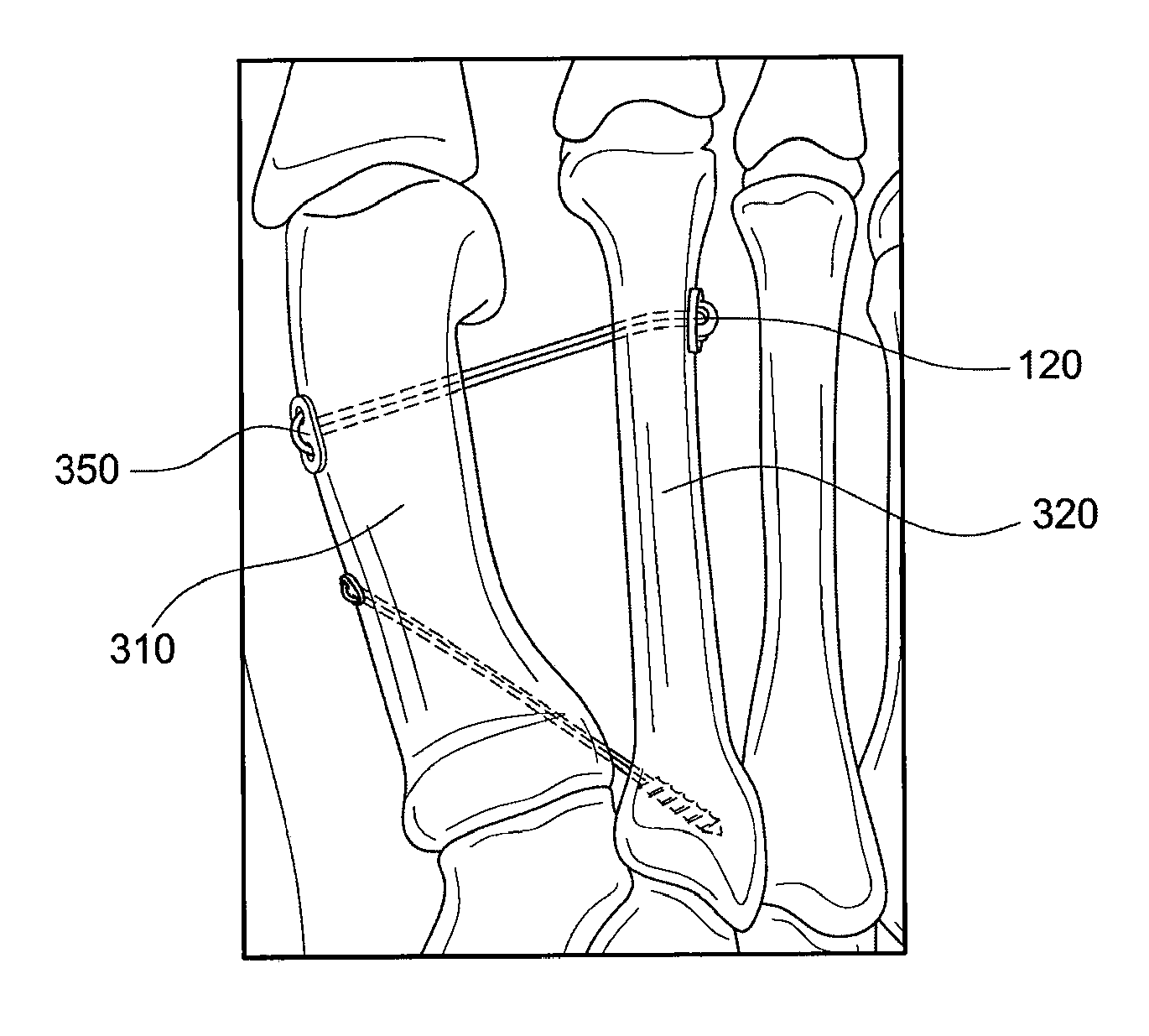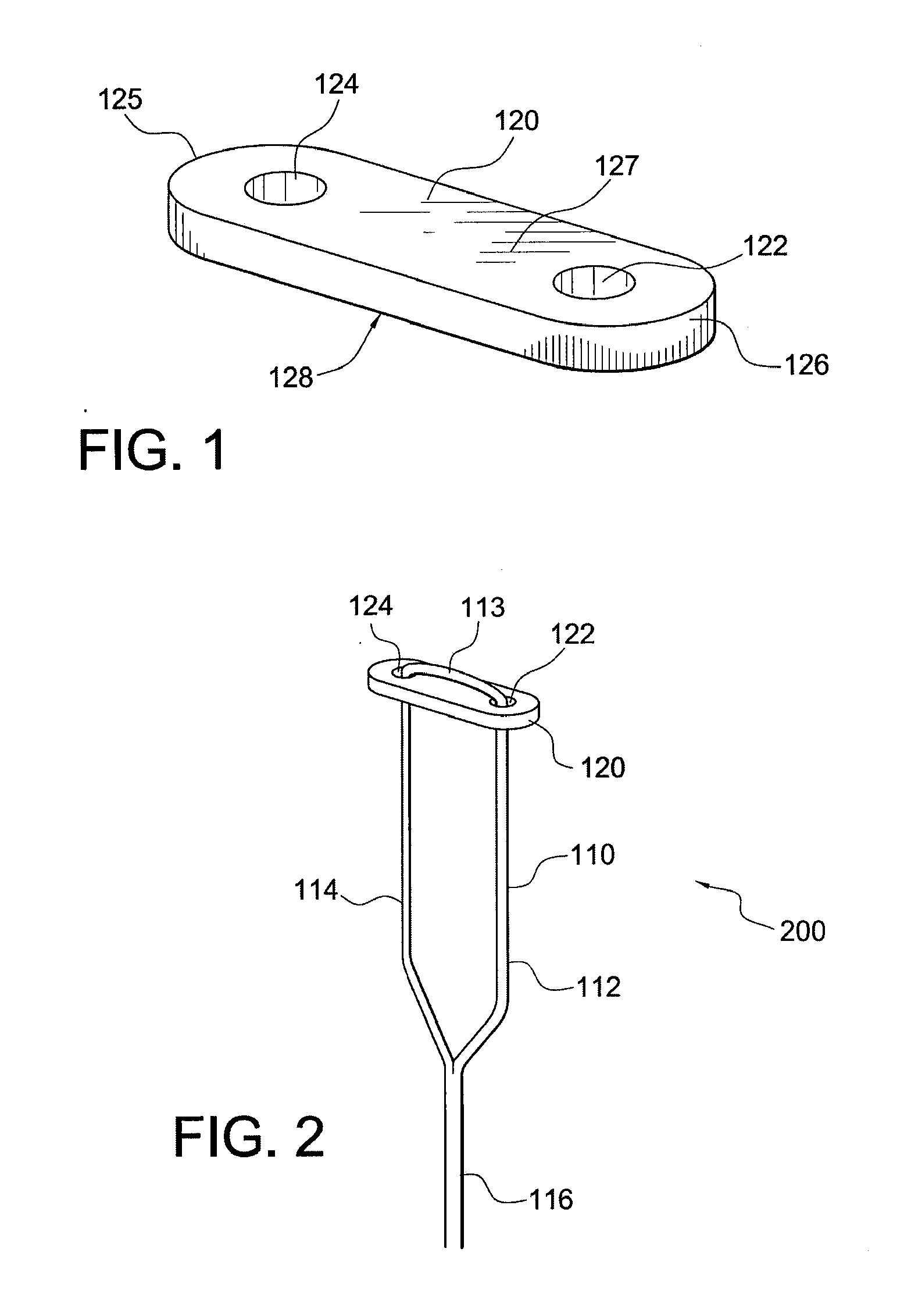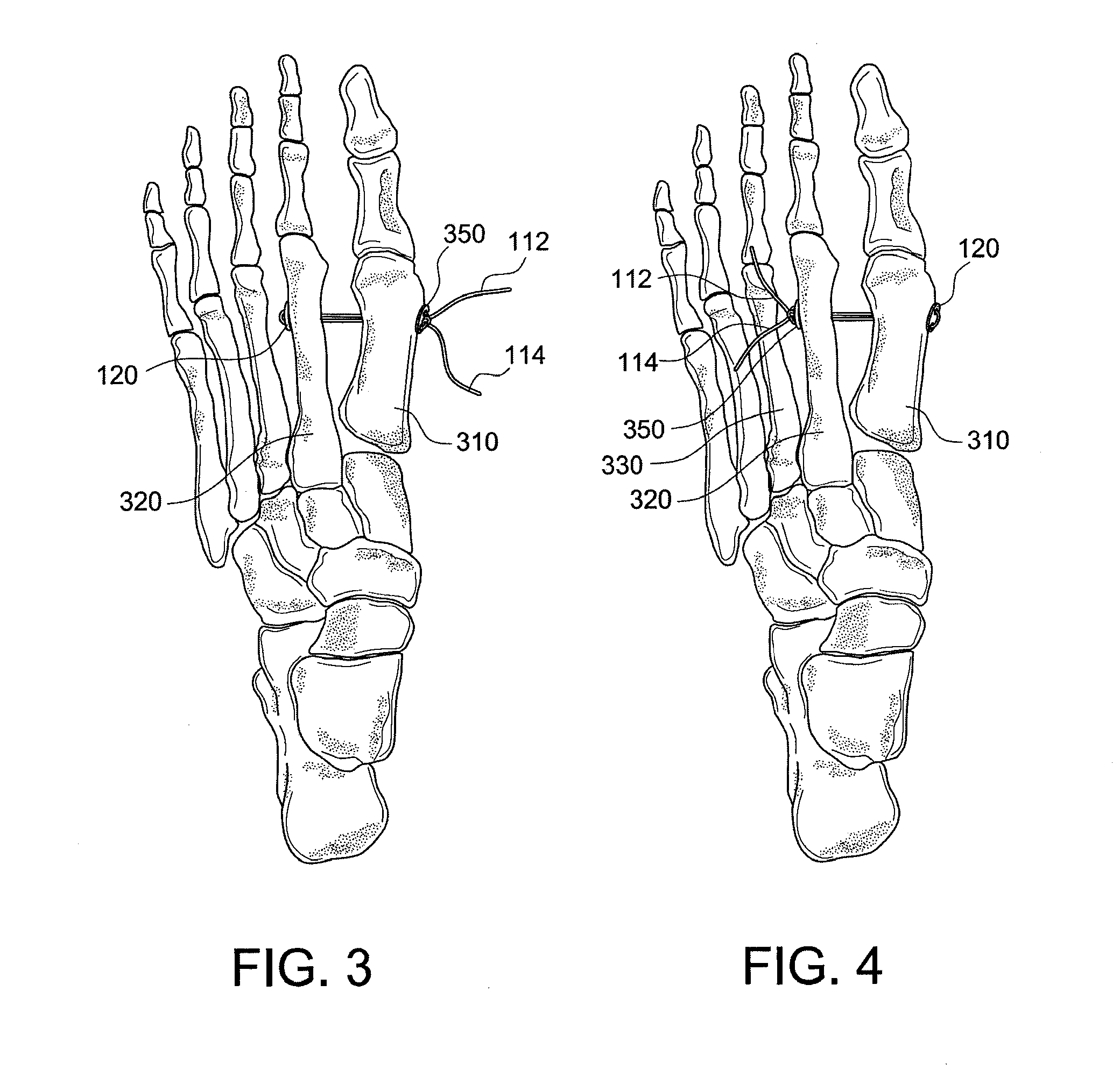Hallux valgus repairs using suture-button construct
a technology of hallux valgus and suture button, applied in the field of surgery, can solve the problems of high degree of technical difficulty of the procedure, too large intermetatarsal angle,
- Summary
- Abstract
- Description
- Claims
- Application Information
AI Technical Summary
Benefits of technology
Problems solved by technology
Method used
Image
Examples
Embodiment Construction
[0015]FIG. 1 illustrates button 120 used in corrective surgery for hallux valgus. Button 120 is an oblong shaped plate with chamfered or rounded corners and edges. Button 120 has a length that extends from proximal end 125 to distal end 126. Button 120 further has a width that is shorter than the length. Button 120 also has front face 127 and back face 128, wherein the distance between the front and back face 127, 128 is smaller than the width of button 120. In another embodiment, the distance between front and back face 127, 128 is greater than the width of button 120.
[0016]Button 120 further includes holes 122 and 124 that extend from front face 127 to back face 128. Hole 122 is located near distal end 126. Hole 124 is located near proximal end 125. Holes 122 and 124 are of sufficient diameter to allow suture 110 to pass through, but not so large as to severally compromise the integrity and strength of button 120.
[0017]FIG. 2 illustrates suture-button construct 200 (attachment 200...
PUM
 Login to View More
Login to View More Abstract
Description
Claims
Application Information
 Login to View More
Login to View More - R&D
- Intellectual Property
- Life Sciences
- Materials
- Tech Scout
- Unparalleled Data Quality
- Higher Quality Content
- 60% Fewer Hallucinations
Browse by: Latest US Patents, China's latest patents, Technical Efficacy Thesaurus, Application Domain, Technology Topic, Popular Technical Reports.
© 2025 PatSnap. All rights reserved.Legal|Privacy policy|Modern Slavery Act Transparency Statement|Sitemap|About US| Contact US: help@patsnap.com



